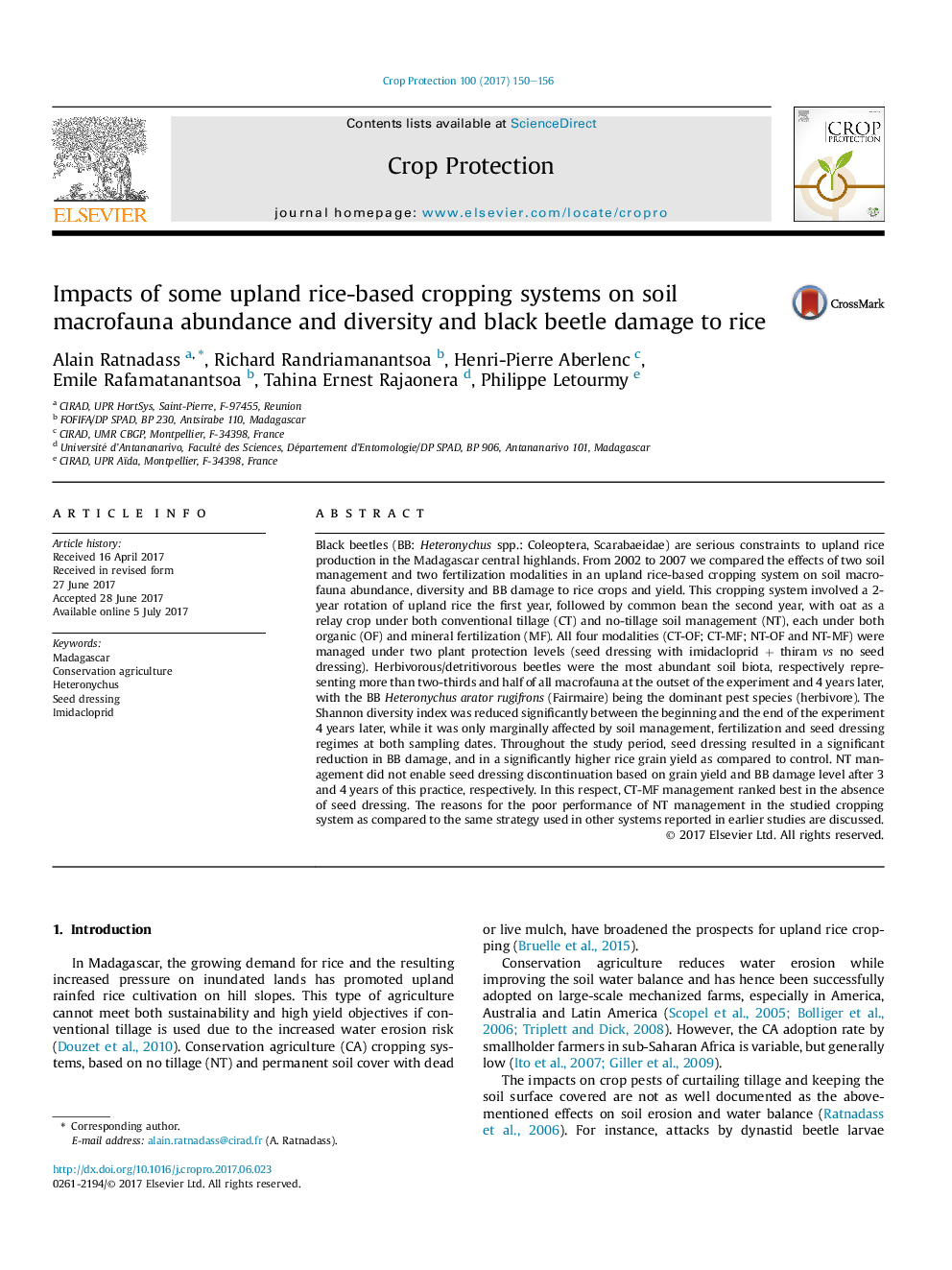| کد مقاله | کد نشریه | سال انتشار | مقاله انگلیسی | نسخه تمام متن |
|---|---|---|---|---|
| 5760823 | 1624287 | 2017 | 7 صفحه PDF | دانلود رایگان |
- We studied tillage, fertilization & seed-dressing effects in a rice-bean rotation.
- Upland rice seed-dressing with imidacloprid did not affect the soil macrofauna.
- Seed-dressing reduced black beetle (BB) damage and increased rice grain yield.
- Conventional tillage (CT) reduced BB damage and increased rice grain yield.
- Seed dressing could be halted after 4 years of the studied rotation under CT.
Black beetles (BB: Heteronychus spp.: Coleoptera, Scarabaeidae) are serious constraints to upland rice production in the Madagascar central highlands. From 2002 to 2007 we compared the effects of two soil management and two fertilization modalities in an upland rice-based cropping system on soil macrofauna abundance, diversity and BB damage to rice crops and yield. This cropping system involved a 2-year rotation of upland rice the first year, followed by common bean the second year, with oat as a relay crop under both conventional tillage (CT) and no-tillage soil management (NT), each under both organic (OF) and mineral fertilization (MF). All four modalities (CT-OF; CT-MF; NT-OF and NT-MF) were managed under two plant protection levels (seed dressing with imidacloprid + thiram vs no seed dressing). Herbivorous/detritivorous beetles were the most abundant soil biota, respectively representing more than two-thirds and half of all macrofauna at the outset of the experiment and 4 years later, with the BB Heteronychus arator rugifrons (Fairmaire) being the dominant pest species (herbivore). The Shannon diversity index was reduced significantly between the beginning and the end of the experiment 4 years later, while it was only marginally affected by soil management, fertilization and seed dressing regimes at both sampling dates. Throughout the study period, seed dressing resulted in a significant reduction in BB damage, and in a significantly higher rice grain yield as compared to control. NT management did not enable seed dressing discontinuation based on grain yield and BB damage level after 3 and 4 years of this practice, respectively. In this respect, CT-MF management ranked best in the absence of seed dressing. The reasons for the poor performance of NT management in the studied cropping system as compared to the same strategy used in other systems reported in earlier studies are discussed.
Journal: Crop Protection - Volume 100, October 2017, Pages 150-156
